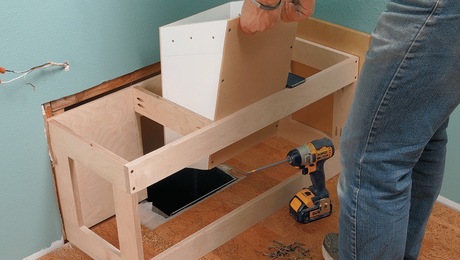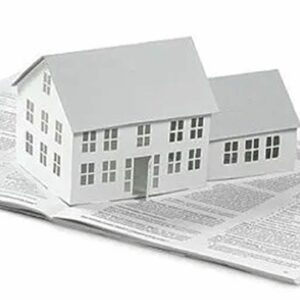I have a 3-season porch. One of the best parts of the house I recently bought. It is all 1X6 TG pine. The shed roof, also 1X6 pine layes over 4 large 6X12 cedar beams on 4′ centers. The roof is only 4.5″ thick. The center is 3″ polystyrene. I have no electric in the ceiling and would like to install a ceiling fan, but I’m looking for other alternatives than running conduit.
Any ideas?


















Replies
Rigid foam is real easy to cut. Make a real long drill from a piece of EMT by filing crude teeth on the end. Bore a hole through the foam from the edge of the roof.
Cool idea. Not sure how to drill a 1/2"+ piece of emt. maybe wedge a 1/2 bit into it. What hapens to the cut foam?
Have you tried this before?
Edited 6/16/2004 5:34 pm ET by hammer-n
Wire mould and cover it with an ornate moulding or wood arrangement to yur likin'.........
Life is not a journey to the grave with the intention of arriving safely in a pretty and well preserved body, but rather to skid in broadside, thoroughly used up, totally worn out, and loudly proclaiming....
WOW!!! What a Ride!
Depends. As I see it, I have handled similar situations many times, you have three separate problems.
First, where are you getting your power from? Easiest situation is that the you can get power from within an attic. Depending on the situation you might be able to run a circuit from the panel up into the attic. Related to this is switching. No switch, other than at the fan itself controling the fan motor and any light, is easiest. Running cables down to a wall switch is relatively easy, or not, depending on the situation.
Second, how are you supporting the fan. You need a fan rated box or pan, a shallow box only about half and inch deep. It might seem like a 1 by 6 board ceiling would hold a fan by just screwing the box to the boards. This allows you to get by with just drilling a small, 7/8", hole. This can be a problem as this means you may have to blind drill from the attic into the shed roof.
If your aiming at a 1/2" slot below the insulation where going too low means cutting a nasty groove into the ceiling surface and going too high means not being able to fish it at all makes this something other than easy. Having to work in a tight, hot attic and fishing the cable in, while a helper stares up through the 7/8" hole, is doable but doesn't make my list of 'fun'things to do.
Sometimes this might work. Don't underestimate the forces a ceiling fan can produce. It is a live load. I have seen nails vibrated out and screws loosened or broken by fatigue.
If the planks are screwed securely your pretty much set. Straddle two boards and you could mount a fan pan by just screwing the pan into the ceiling surface. 4-#10 x 1" screws located away from edges would do it. This would make the fan escutcheon hand down a bout half an inch. Some object to this. The small amount of pan exposed can be diguised by wrapping the edge with white, brown or black tape.
A second plan, one that can sometimes help with the third part of your problem, running the cable through the shed roof, would be to flush mount a fan box. A hole saw, used with extreme care, jigsaw or Sawsall can be used to cut the hole. Trying to straddle the maximum number of boards helps spread the load and avoid splits or loose hanging ends.
Once you cut your hole threading a cable through any open space or drilling with a flex bit parallel to the roof and up into the attic is much easier. That 4" hole makes this much easier. Once the flex bit makes it into the attic it is left in place and the cable is attached to the driven end. A trip in the attic to grab the bit and make the power connections is in order.
The problem with this is that with thin boards you end up with loose ends that have to be stabilized. Also you need to arrange some blocking to spred the load. Pulling out the insulation so you can lay a set of 2 by 4 sleepers, as long as possible, crossways to the boards may be necessary. A third 2 by rests on the sleepers. The fan box, typically 1-1/2" deep, gets screwed to this. You can screw, toenail or screw and plug through the ceiling, the three board together but the board ceiling will prevent any lateral movement.
Once the cable/s are run mounting the box follows. Once the mounting is installed my usual check is to hang from the box. If a full grown electrician, tool belt and boots can hang from it a fan should remain in place for the life of the house. Once the box is in I usually spray foam the cavity around the box. This locks the support, sleepers and ceiling in as a unit. Especially if you mist some water into the space as this makes the foam harden faster and stick tighter.
There are a lot of variations. If you mount a pan over a beam you can hang the pan off one edge to allow the cable to pass without having to drill the beam. Chamfering the corner can get the pan to something like the beams center. Splitting the boards allows both boards to remain nailed to the beam.
If the beam is well above the flat ceiling some built up blocking or even a couple of lag-studs with connector nuts and all thread can support the box. In this case any box wobble is controlled by depending on a tight cut around the box and the stiffness of the ceiling membrane. Similar to mounting ceiling fans in drop ceilings with all-thread or cables.
Thanks all good ideas.
I don't have the benefit of a attic. The roof and ceiling are one of the same. The roof sheathing and 3/4" TG pine sandwiching 3" styrene insulation. Since the ceiling is beamed with large cedar joists, I'm considering adding cross blocking and installing the wire under that. I believe I will connect a shallow (steel) lamp box to the 3/4 ceiling and use 4 - #10 screws.(as you suggested) To get power I have to run down the wall a couple feet to a wall lamp. It shouldn't be too hard to fish. I've done worse. The fan will have to run with the lights, but better than the alternative of opening the walls for a constant current source.
Edited 6/18/2004 3:50 pm ET by hammer-n
"The fan will have to run with the lights"
You can get modules that mount in the fan box to control the fan and light individually and remotely.
Some use a separate remote. But I believe that some of the controllers mount as a switch in the switch box.